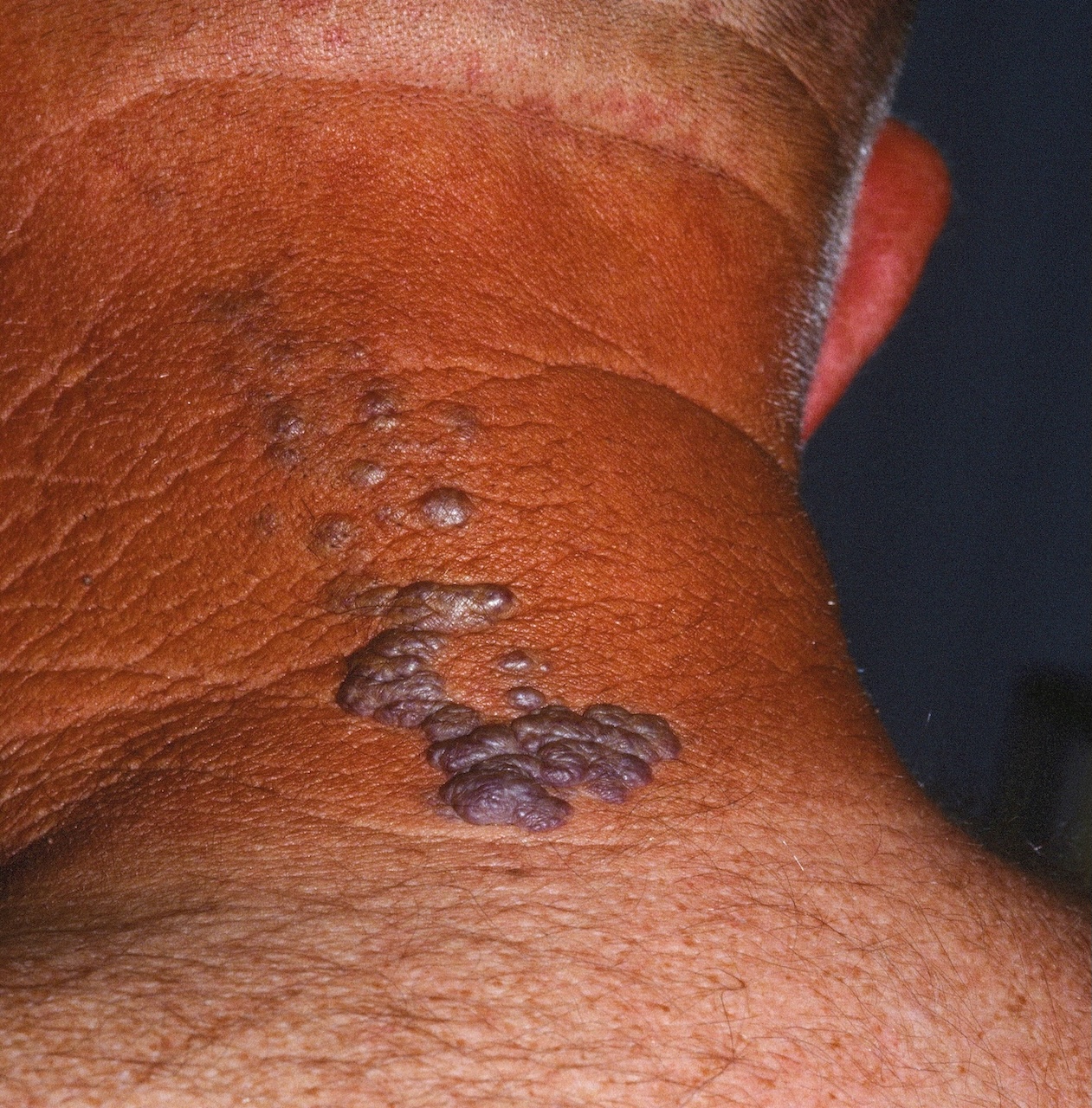
Lymphangioma circumscriptum in an adult, blood-tinged.

Lymphangioma circumscriptum in an adult, blood-tinged.
Just as blood vessels may dilate, forming hemangiomas, lymphatic vessels may dilate, forming lymphangiomas.
Lymphangioma circumscriptum is a congenital (or soon thereafter) lymphatic malformation of the skin appearing as a group of fluid-filled lymphatic vesicles or blebs. Ninety percent are detected in the first two years of life. The fluid is lymphatic and clear or blood-tinged.
Lymphangiomas may also occur later in life on the face, on the chest after mastectomy and radiation therapy or in any location in the setting of chronic lymphedema, e.g. the groin after surgery.
Grouped vesicles with onset from birth to adulthood is characteristic of lymphangioma circumscriptum. It may be congenital (90% onset first two years of life) and large or acquired and small. The tongue is a common site. Oozing, crusting, swelling, pain and itch are not uncommon. The fluid may be blood-tinged or show a blood/fluid line. These lesions often communicate with deeper lymphatics which may explain why simple destruction commonly leads to recurrence.
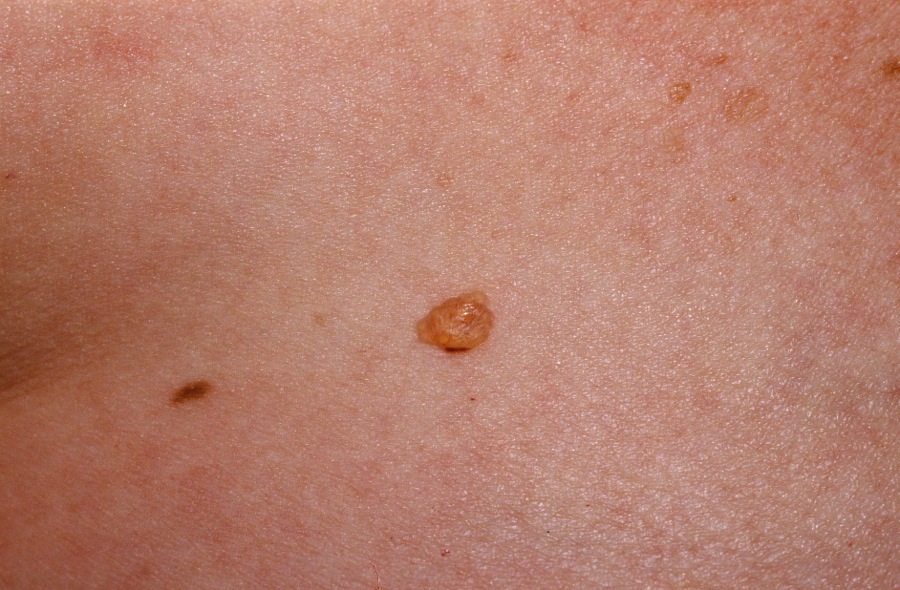
A simple lymphangioma which is a blister or bleb of the lymphatics.

Blood-tinged lymphangiomas after mastectonmy.

Blood-tinged lymphangiomas after mastectonmy.
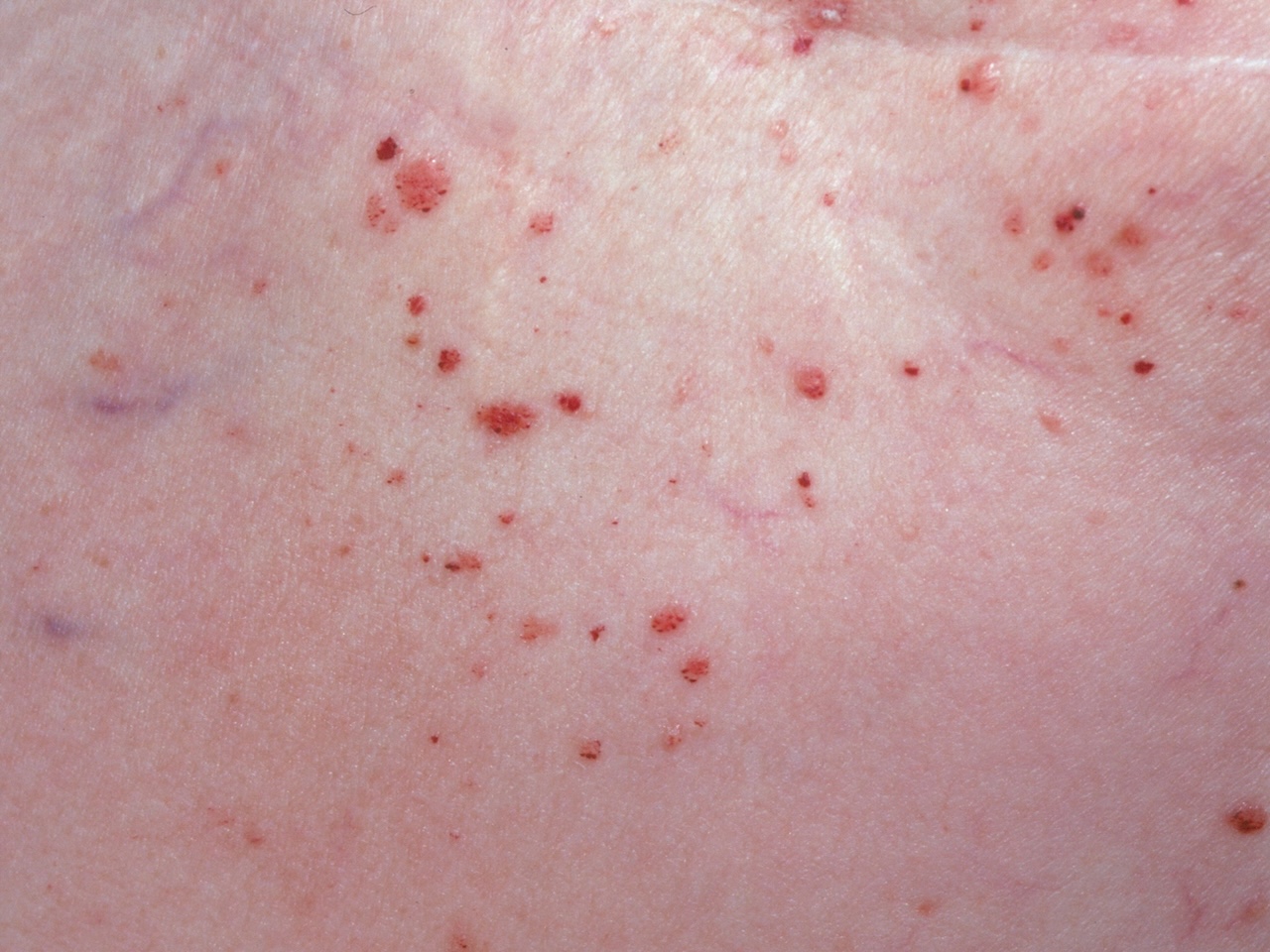
Blood-tinged lymphangiomas after mastectonmy.
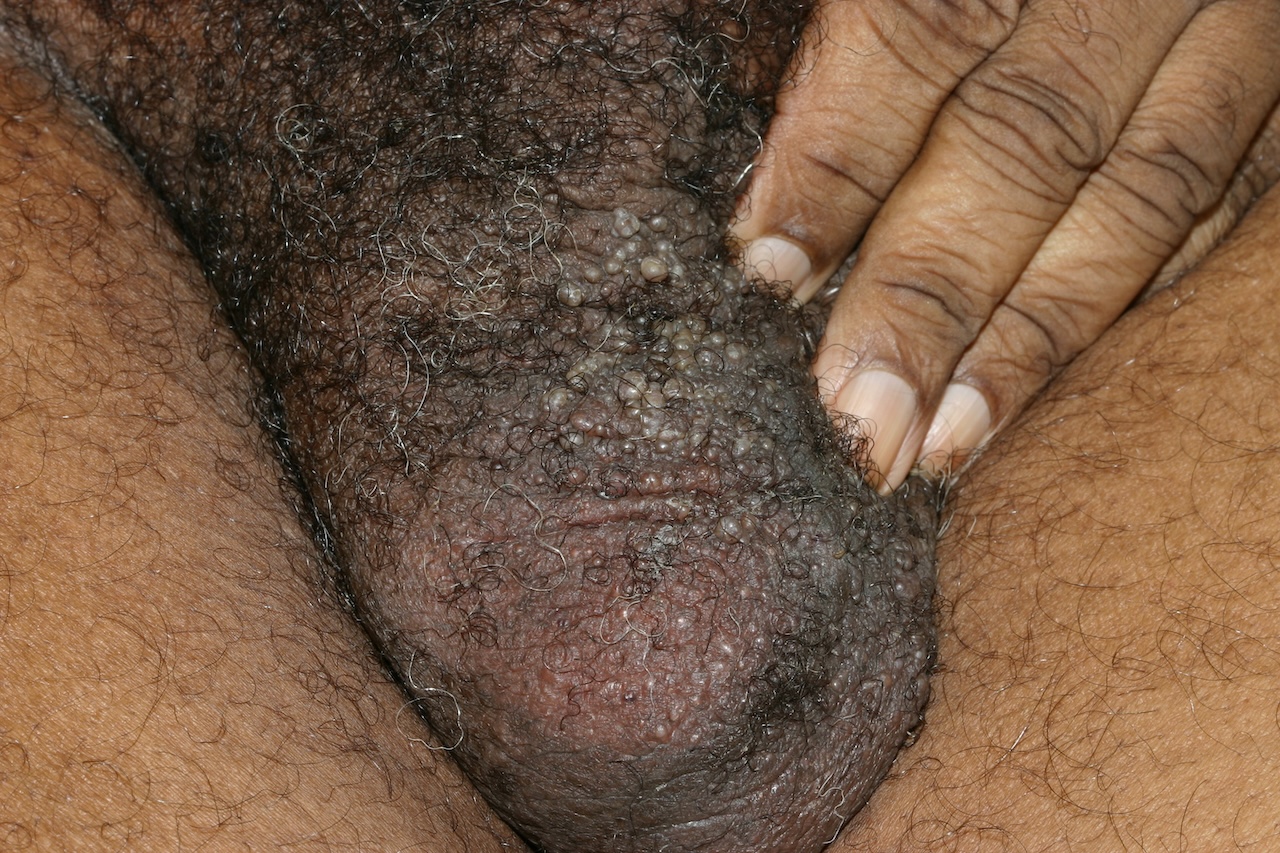
Lymphangiomas of the scrotum in the setting of chronic lymphedema.
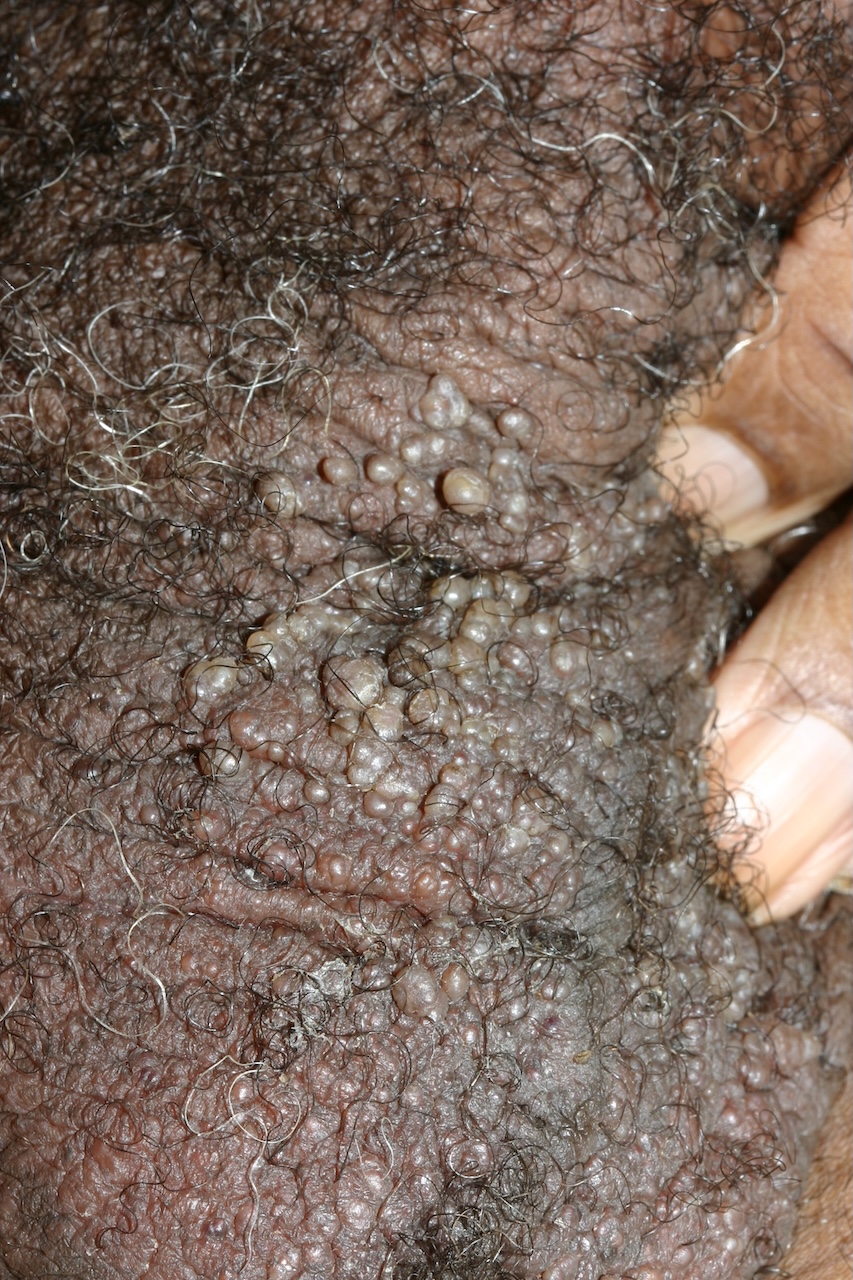
Lymphangiomas of the scrotum in the setting of chronic lymphedema.
Homepage | Who is Dr. White? | Privacy Policy | FAQs | Use of Images | Contact Dr. White